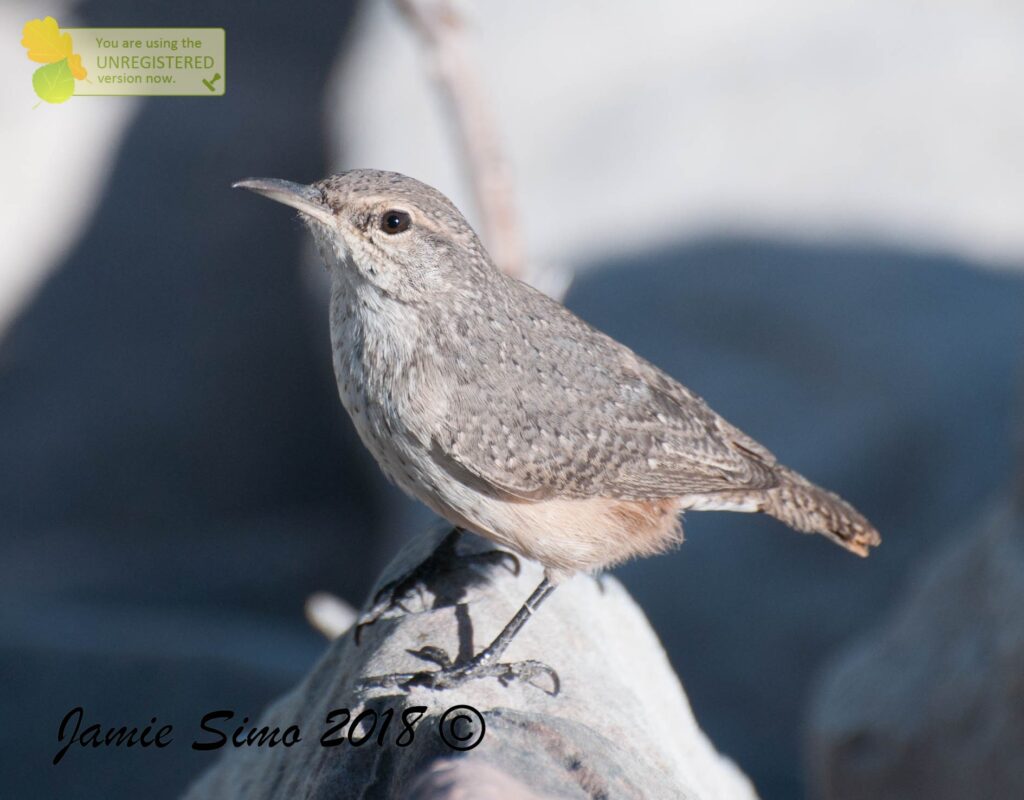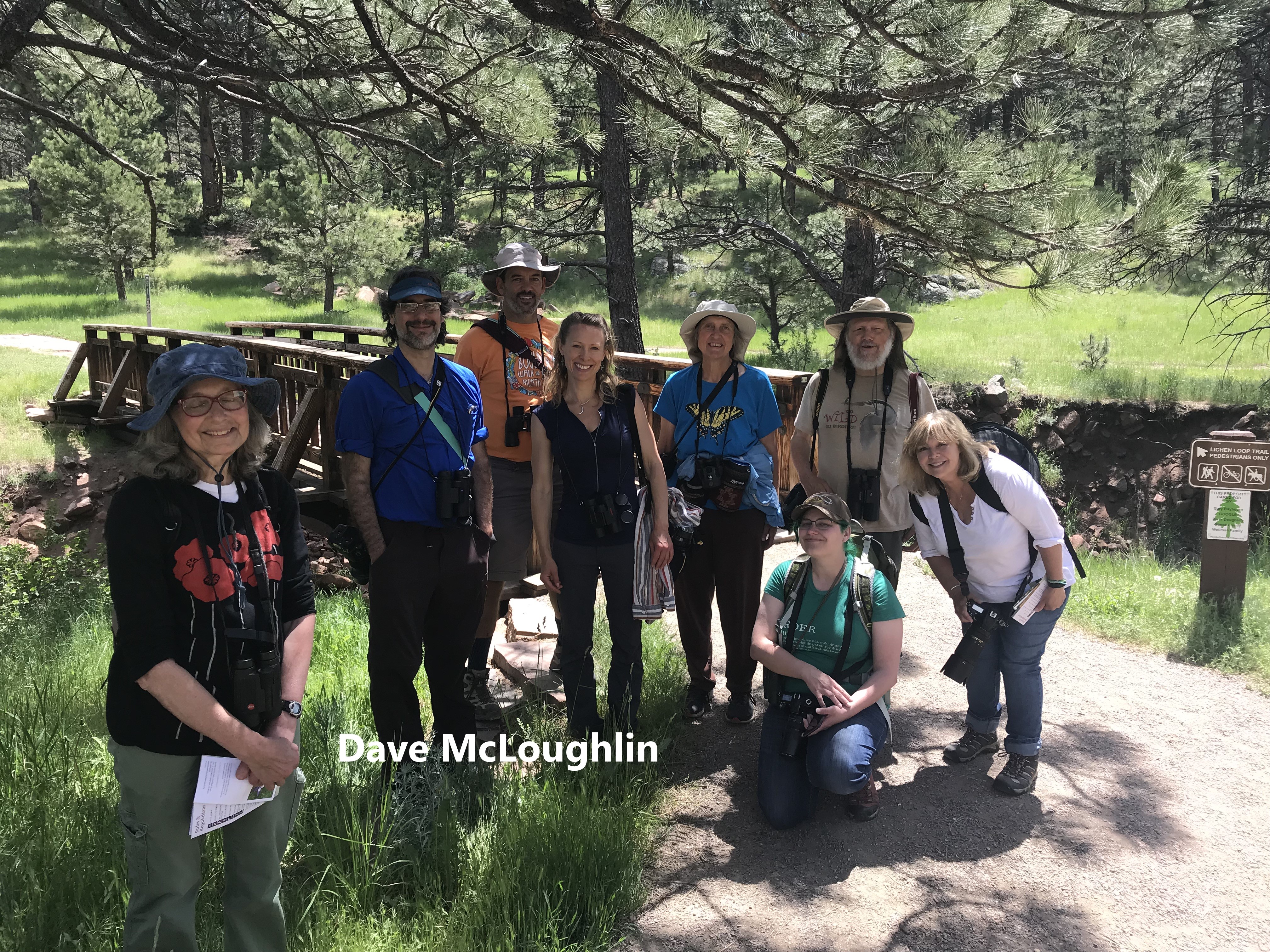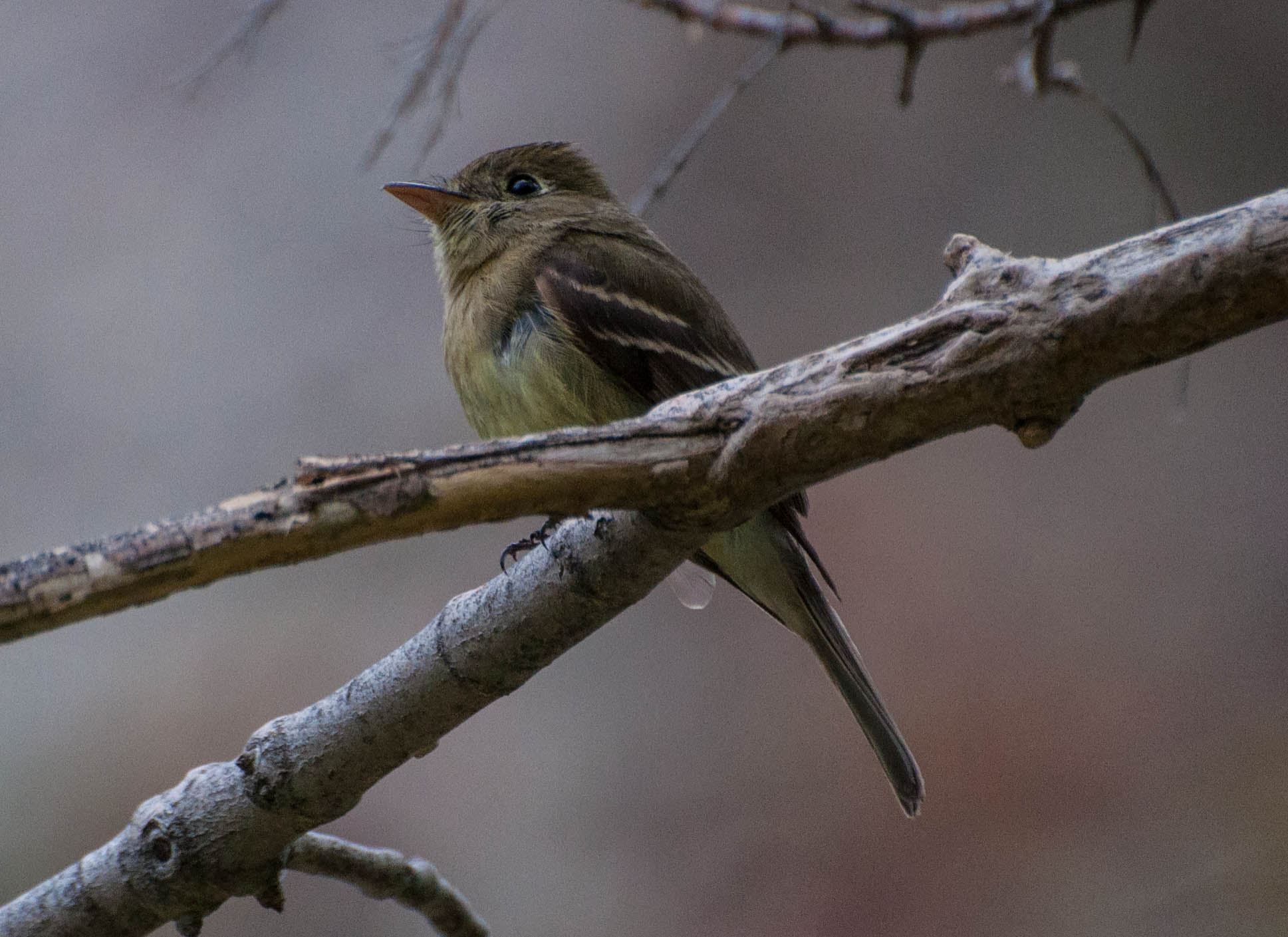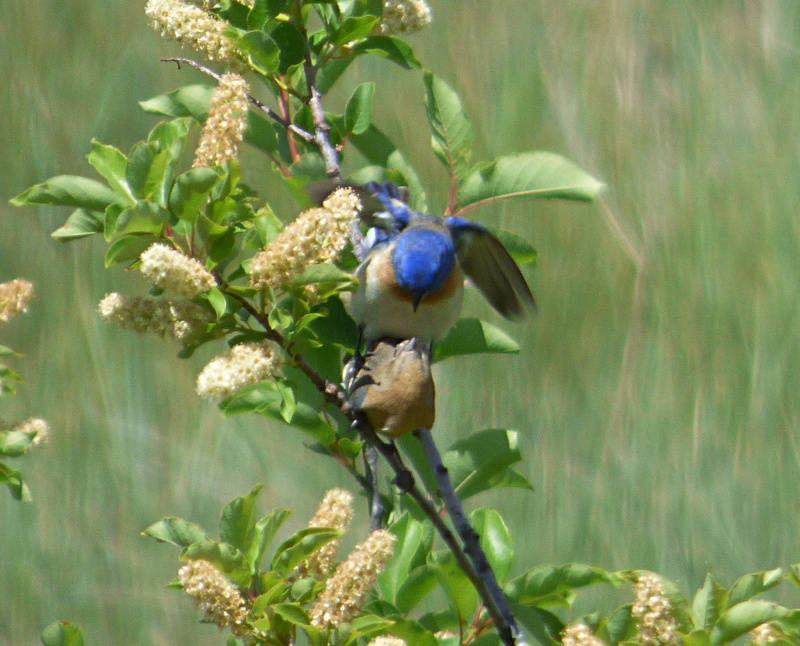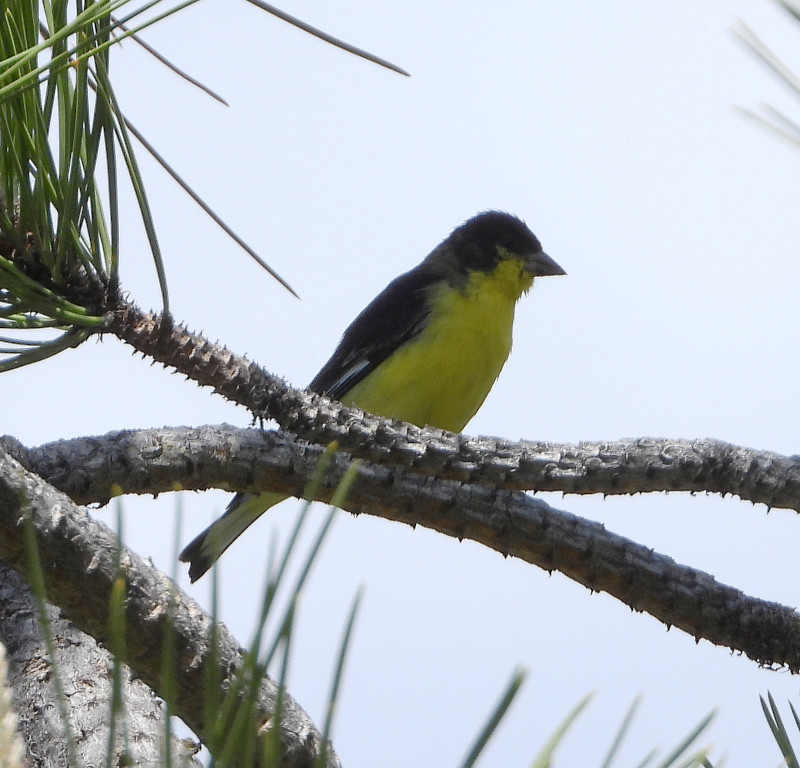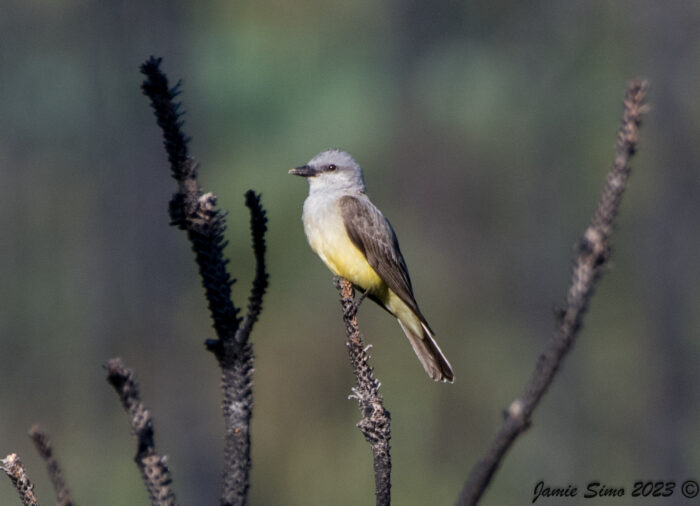
Unfortunately our guest bird walk leader wasn’t able to lead this month’s bird walk, but that just meant I had the pleasure instead! Heil Valley Ranch is one of the jewels of Boulder County’s open space program with over 100 bird species recorded there.
Our group met at the main parking area at 8am to walk the Lichen Loop. It’s been interesting charting the changes to Heil since the Cal-wood Fire roared through in fall of 2020. The Lichen Loop in particular was heavily impacted by the fire, its forest canopy replaced by grasses, native wildflowers, and invasive weeds. What trees remain are mostly charred skeletons, a striking counterpoint to the lush understory and the perfect backdrop for our colorful migrants.
Along the stream running parallel to the parking lot we heard the newly renamed Western Flycatcher, formally classified as the Cordilleran Flycatcher. It’ll be hard to think of it as anything other than the Cordilleran though because its high-pitched call sounds very much like it’s saying its name: “cordi!” We also heard the melodious song of the Lazuli Bunting, though we wouldn’t get a good view of one until about halfway through our walk when a beautiful male perched long enough for us all to get a good look at his azure back, white belly, and orange breast.
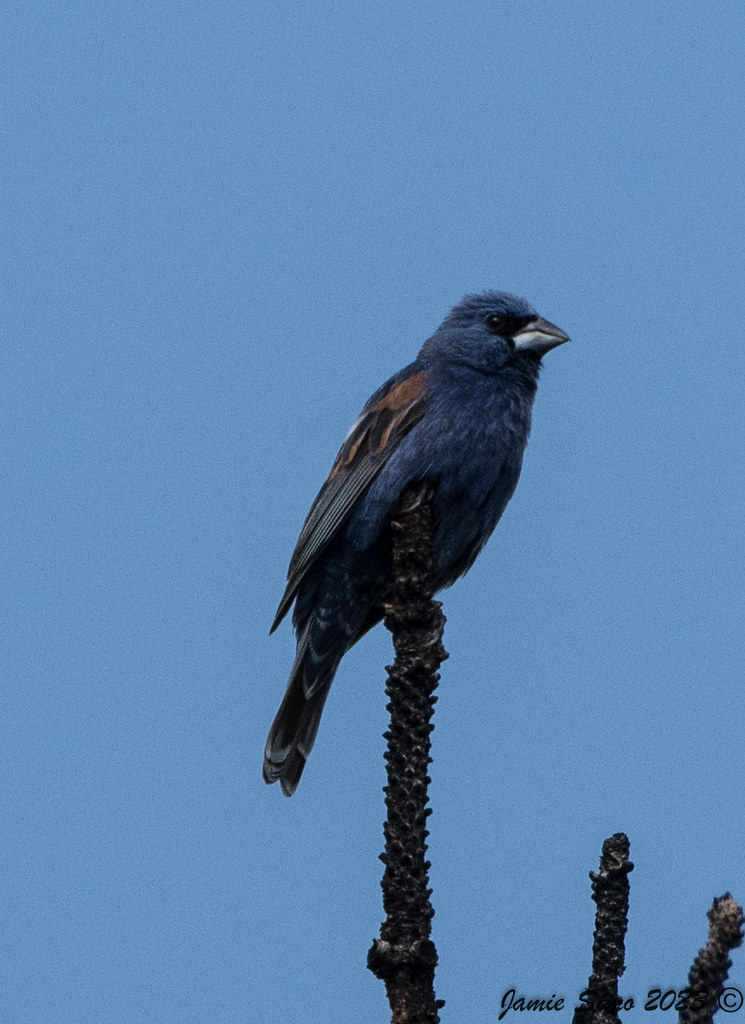
We were also privileged to get great looks at several male Blue Grosbeaks, a grass and shrubland bird that didn’t frequent the Lichen Loop prior to the Cal-wood Fire. Like its relatives, the Blue Grosbeak is named for its large, seed-cracking bill, which is a silvery grey color. A deeper blue than the Lazuli Bunting with chestnut wings, the Blue Grosbeak sounds a little like a scratchy American Robin when he sings, only with fewer pauses.
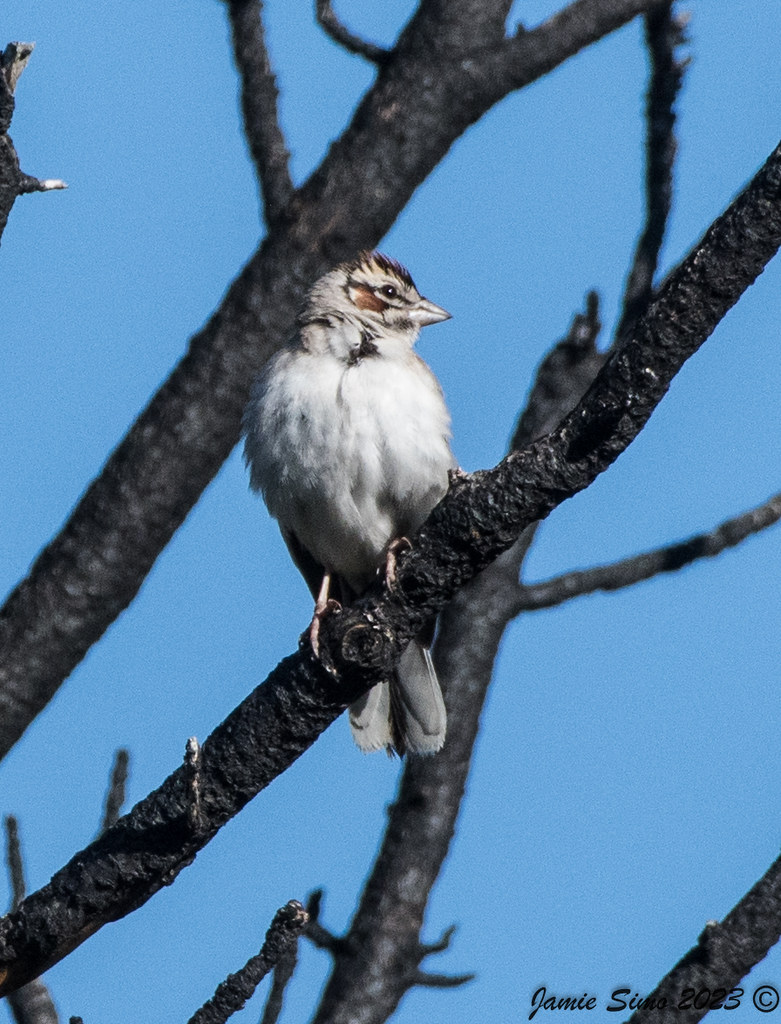
Another bird of note was the Lark Sparrow, a large sparrow with a beautiful red face pattern that makes me think of Southwestern Native American pottery. We also saw several Western Kingbirds with their contrasting grey backs and bright yellow bellies. Back in the parking lot we wrapped up our trip with a flock of 10 Wild Turkeys, a pair of Golden Eagles that perched in a tree on the hillside, and a gorgeous male Western Tanager. A perfect morning for birding!
Lichen Loop Trail, Boulder, Colorado, US
28 species
Wild Turkey 10
Mourning Dove 4
Broad-tailed Hummingbird 2
Turkey Vulture 2
Golden Eagle 2
Hairy Woodpecker 1
Northern Flicker 1
Western Wood-Pewee 5
Cordilleran Flycatcher 1
Western Kingbird 3
Eastern Kingbird 1
Steller’s Jay (Interior) 2
Black-billed Magpie 8
White-breasted Nuthatch (Interior West) 3
Rock Wren 1
House Wren 1
American Robin 1
Lesser Goldfinch 4
Chipping Sparrow 1
Lark Sparrow 1
Spotted Towhee 2
Western Meadowlark 4
Bullock’s Oriole 2
Brown-headed Cowbird 1
Brewer’s Blackbird 8
Western Tanager 1
Blue Grosbeak 5
Lazuli Bunting 5




